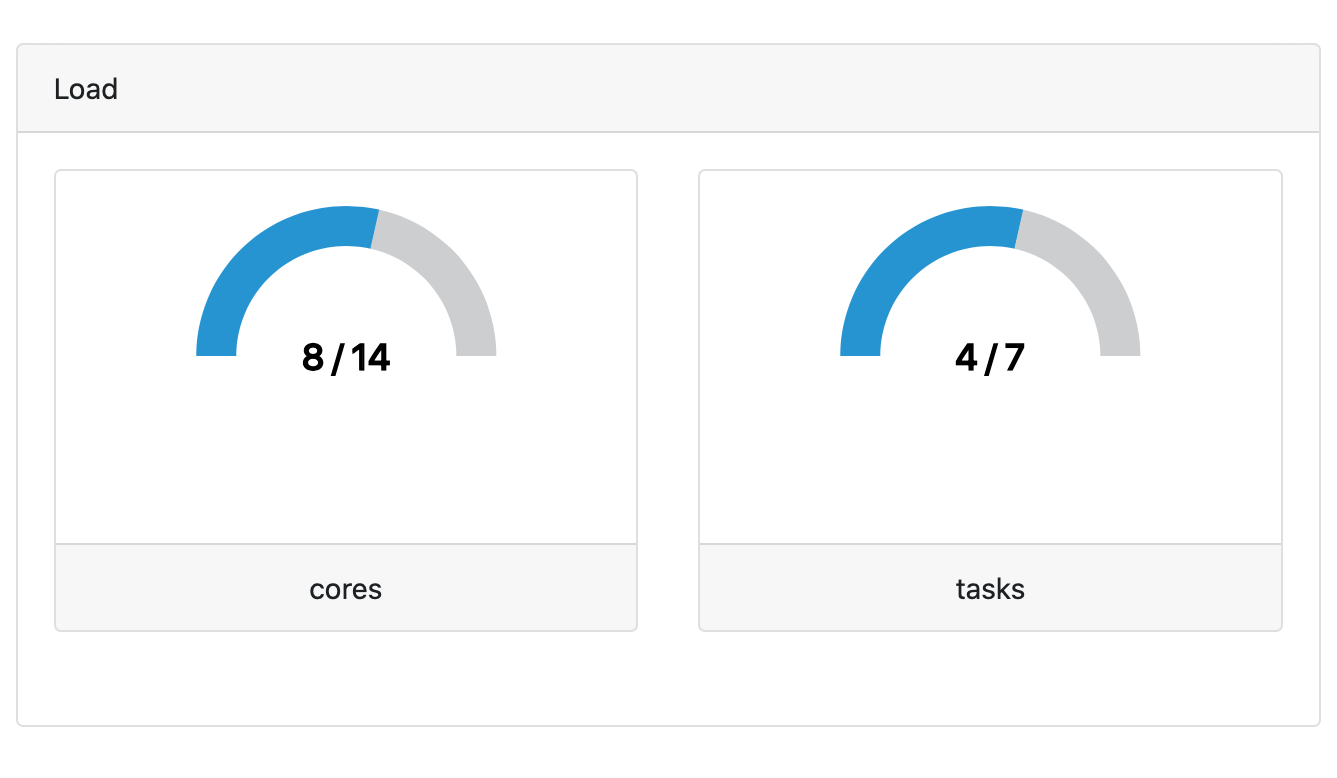Aggregate stats, load, utilization
Aggregate stats
The Aggregate stats panel displays a real-time summary of the resources used by a pipeline run.
Wall time
The wall time is the total running time for all tasks. The runtime of an individual task is computed as follows:
See also: start and complete in the task table.
CPU time
The CPU time is the total CPU time used by all tasks. It is based on the CPUs requested, not the actual CPU usage. The CPU time of an individual task is computed as follows:
See also: cpus, start, and complete in the task table.
Total memory
The total memory is the total memory used by all tasks. It is based on the memory requested, not the actual memory usage.
See also: peakRss in the task table.
Read and write
The read and write are the total amount of data read from and written to storage.
See also: readBytes and writeBytes in the task table.
Estimated cost
The estimated cost is the total estimated compute cost of all tasks in the pipeline run. The compute cost of a task is computed as follows:
See also: cost, start, complete, cpus, and memory in the task table.
Tower uses a database of prices for AWS and Google Cloud, across all instance types, regions, and zones, to fetch the VM price for each task. This database is updated periodically to reflect the most recent prices.
Prior to Tower Enterprise 22.4.x, the cost estimate used realtime instead of complete and start to measure the task runtime. The realtime metric tends to underestimate the billable runtime because it doesn't include the time required to stage input and output files.
The estimated cost is subject to several limitations:
-
It does not account for the cost of storage, network, the head job, or how tasks are mapped to VMs. As a result, it tends to underestimate the true cost of a pipeline run.
-
On a resumed pipeline run, the cost of cached tasks is included in the estimated cost. As a result, the total cost of multiple attempts of a pipeline run tends to overestimate the actual cost, because the cost of cached tasks may be counted multiple times.
For accurate cost accounting, you should use the cost reporting tools for your cloud provider (such as AWS Cost Explorer). You can use Resource labels in your compute environments to annotate and track the actual cloud resources consumed by a pipeline run.

Load
The Load panel displays the current number of running tasks and CPU cores vs the maximum number of tasks and CPU cores for the entire pipeline run. In the example below, there are 4 tasks with a total of 8 CPU cores currently running, and during the pipeline run there have been at most 7 tasks with 14 CPU cores running at one time.
These metrics measure the level of parallelism achieved by the pipeline. You can use these metrics to determine whether your pipeline runs are fully utilizing the capacity of your compute environment.

Utilization
The Utilization panel displays the average resource utilization of all tasks that have completed successfully in a pipeline run. The CPU and memory efficiency of a task are computed as follows:
See also: pcpu, cpus, peakRss, and memory in the task table.
These metrics measure how efficiently the pipeline is using its compute resources. Low utilization indicates that the pipeline might be requesting too many resources for some tasks.
